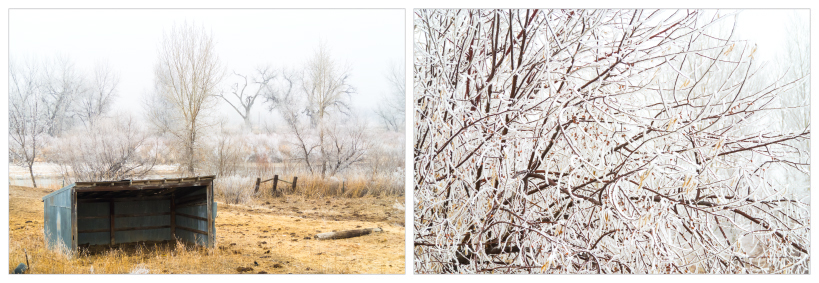
Slippery, cold to the touch, brittle yet strong, weighty, highly transparent, ephemeral. We know it when we see it. We use it when we need it, avoid it when we don’t. Ice, on the other hand, knows us not, cares even less. It will kill us without hesitation or regret, should we disregard its rules, its nature. And yet, ice can be fun and beautiful and even enlightening. Enlightening? Well, maybe not in the same sense a book or a teacher can be enlightening when we read or listen attentively. But, should we use our brains judiciously, we can learn from ice in the same way we can learn from a scientific test. Using our brains, we can model the behavior of ice. We can model its nature, its strengths and weaknesses, its predispositions, its malleability. With experience, as we learn, our models of ice nature and behavior become more and more accurate, more and more comprehensive. Using our brains, we come to “know ice” as we come to know any tool or person within our experience, given our own interests and mental capacity. Ice, like many things, is amenable to absorption within our personal knowledge structures. It can become a meaningful and potentially useful part of us. However, that truth is not, and will not be, a part of every individual human being’s experience. But why, if we, all of us, as has been asserted, have all been created equal in the eyes of God? Certainly, the word “equal” cannot mean identical, as we are most assuredly not exactly the same as any other human being, not even exactly the same as our supposedly identical twin. So, equal how? Perhaps what is meant is that we are all equally worthy at birth of nurturant love and affection from our parents? Maybe. But, the hard truth is that not all parents, or even all communities, are capable of delivering the optimum amount of nurturant love and affection required for each of us. Hence, hardly any of us come anywhere near maturing into our full potential. On the contrary, almost all of us arrive at adulthood with any number of scars, debilitating defects, and intellectual limitations. At maturity, we are not anywhere near “equal” to each other in skills, knowledge, health, motivation, or potential. And, unlike ice that may fail in strength, shape, or beauty, we cannot melt down and try again some other time. Even given optimum remediation, treatment, make-over, re-education, our capacity to reform and reconstitute as needed is quite limited. So, what is to be done, given the increasing inequality amongst us that our current systems of self-government seem to be producing? What can fresh blood, fresh thinking, and fresh ideas really do to correct the current increasingly dangerous growth in inequality across all of our various societies? Certainly, I do not have exact answers to that question. But, I think there are directions we can look toward for answers. First, we can try to control the birthrate so as not to further compound the problems we face. But, doing that equitably across all populations seems largely undoable, a prescription for probable revolution and war, I’d guess. War, in fact, might be the more practical and expedient choice. Second, we could aim for better parenting and schooling, thinking maybe the next generation might turn out better. That does seem reasonable and almost doable. However, I’d suggest adding into curricula a bit more realism to any and all encouragement of aspiration. Life can certainly be meaningfully fulfilling and socially valued without everyone aspiring to be “a star” or “the best”. Still, all potential toward socially useful endpoints should be nurtured to maximum fulfillment. Complex societies need all manner of competence in any number of fields. Third, as to what to do with the rapidly accumulating masses of human misery and tragedy currently plaguing us, I’m not sure. There is a social science “truism”, espoused by economist and Nobel Laureate Milton Friedman, that if you subsidize something, i.e. throw money at it, you get more of it. In a great many cases, that truism seems to hold. So, I’d be careful about putting too much effort and resource into subsidizing poverty and ignorance, least we wind up with more of it instead of less. However, serious effort toward converting today’s widespread disgruntlement into realistically useful and fulfilling enthusiasm does seem a worthy policy goal. Less anxiety and disgruntlement all around would definitely be a very desirable turn of events. Fourth, another attribute of ice is that it can and does separate things, providing a barrier to interaction. That separation can sometimes be protective, as in preventing further heat loss or even heat penetration. Socially, an icy chill between people may temporarily prevent further hurt, but it can also prevent the reconstitution of relationships in such a way that could form a basis for growth and prosperity for all involved. Let us hope the icy barriers that have formed between so many of us allows for both the licking of wounds and the serious reflection necessary to ignite inspiration that will chart a rebuilding of productive and fulfilling relationships amongst us all, once those icy walls have begun to melt. |
• Posted: Feb 16, 2021 17:13:30
• Comments Welcome
• Vote CoolPhotoblogs
• Purchase a Print
• Share
Friday, February 9th, 2018 Greely CO USA |